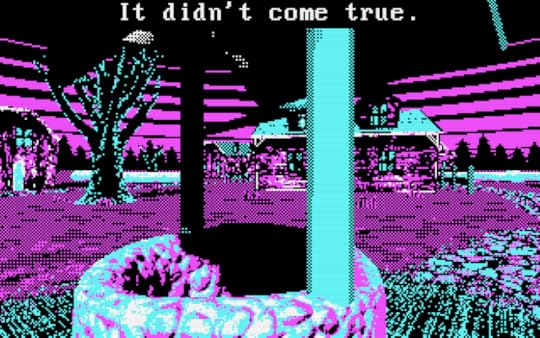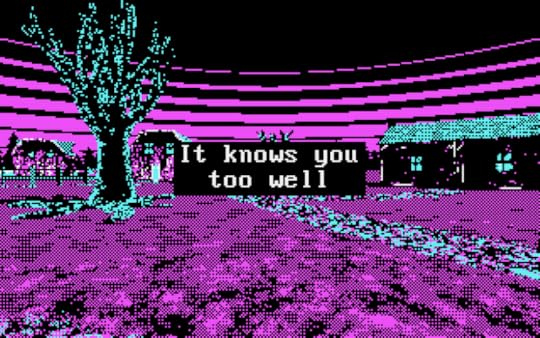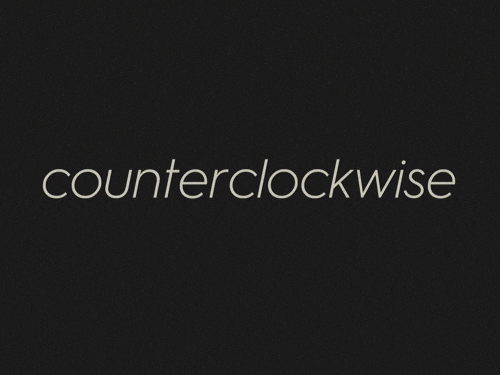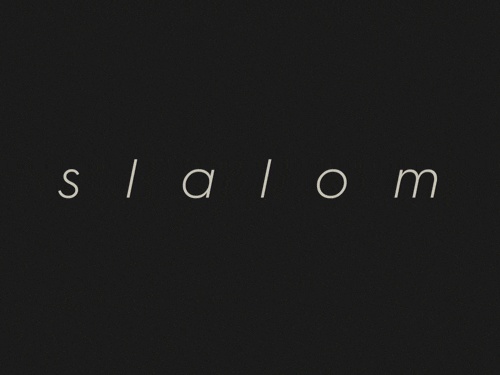Kill Screen Magazine's Blog, page 198
November 9, 2015
A new tabletop game challenges you to maximize ratings as a TV executive
Operating a television network is not a game. Hold your laughter and that thought. We’ll return to it momentarily.
The Networks is a tabletop game that challenges players to perform the duties of TV executives who seek to maximize viewership and, consequently, profit. You bid for shows and talent and allocate them in a way that will hopefully see your ratings soar and your opponents demoralized—not necessarily in that order. The game collected over $103,297 on Kickstarter, which is roughly four times what it set out to make. In light of the rise of cable cutting, it might therefore be more lucrative to make a game about programming than perform the actual task. (Amirite, Les Moonves?)
But TV is no game. It’s not a game when somewhat sentient taxidermy project Donald Trump hosts SNL, just as it isn’t a game when Larry David earns $5,000 for yelling “Donald Trump’s a racist” during said broadcast. Likewise, the ongoing travails of Don Lemon are no game. Only the serious-minded would ask if a plane disappeared through a black hole, or perhaps those hoping to uphold Betteridge’s Law. No, this is no game. Nothing to see here—except television, that is.
Part of the appeal of The Networks is that it channels the raw cynicism of network programming towards ends that are not fundamentally toxic. It’s okay to do whatever it takes to win in games, because it’s an artificial environment. There are no broader consequences to your lusting for eyeballs. The ends justify the means, and in this strange, artificial world, that’s okay. In a similar vein, it’s okay to use Gordon Gekko as an outlet for your rapacious capitalist impulses. At least it’s okay until irony dies and an entire generation grows up wanting to be the Gekko. Then you’ve got a problem. But The Networks isn’t out yet so we can still be somewhat optimistic.
You can find out more about The Networks on its Kickstarter page.
Finally, a videogame that doesn't fetishize nostalgia
"You can't go back home to your family, back home to your childhood ... back home to a young man's dreams of glory and of fame ... back home to places in the country, back home to the old forms and systems of things which once seemed everlasting but which are changing all the time—back home to the escapes of Time and Memory." - Thomas Wolfe
Even the air feels different at home, at once fresher yet also somehow more suffocating. The moment you step off the bus (or train or plane or Delorean), you can already feel the walls closing in on you—only, instead of walls, they're fenced-in houses with lawn ornaments. You never see them move an inch, but every time you turn your head, they loom in your peripheries closer and closer.
You can only replay, the memories closing in
As the holidays approach, the air becomes thick with people mentally preparing to "go back home." Whatever drove city dwellers to the shoebox apartments they pay too much for is the same thing that drives them back out when the month of November comes to a close. You can't really go back—everyone knows that. You can only replay; the memories closing in from the corners like those fenced-in houses.
As the designer behind the 4-color CGA (color graphics adapter) game Homesickened puts it, "You can't go home again. Except that you can. But you don't really want to. And then you do, anyway." Every step taken toward your own fenced-in house is colored by the question "why did I come here," only to be replaced with "why am I here" the minute you cross the threshold. Home. It calls to you like some unsexy siren who knows too much about you. You don't want to go back. But you must, compelled by magic or memories, or both.

While most games fetishize nostalgia (Final Fantasy VII Remake, Shovel Knight, Axiom Verge, Downwell, Every Other Bit Game Ever), Homesickness reminds you why the past should stay in the past. Most nostalgic videogames lie to their players: they update all mechanics and controls while only using the aesthetic of "the good old days." Homesickness commits to 80s technology wholeheartedly, the high-pitched whirring of an old desktop PC underscoring a game that refuses to comfort players with the convenience of modern day advancements.
There is no point-and-click or mouse functionality to be found here, nor is there a WASD or multi-directional navigation for that matter. Split screens aren't a bug: they're the result of you moving through the world as it struggles to load your next step forward. More than just sluggish and cumbersome, the controls put metaphor into practice. You literally can't look at Homesickened for too long before feeling the queasiness of time travel take over.
at once the same, at once completely unidentifiable
The terribly outdated controls of Homesickened are such a stroke of brilliance, in fact, that Lucas Pope, creator of Papers, Please and the upcoming 1-bit adventure Return of the Obra Dinn, felt the need to reach out to the creator (known only as "Snapman") on Twitter. As Pope notes, while the creator chooses to keep the cumbersome controls of early videogame development in tact, the clever workarounds that circumvent the technological limitations are simply inspired.
For example: to highlight the figures you need to talk to from far away, Snapman renders these figures in a neon blue, which eventually fades into an actual face the closer you get to it. More than just a technical workaround, this also serves a narrative function. The people who inhabit this hometown jumping back and forth between recognizable faces and vague shapes, caught in the out-of-focus sharpness of nostalgia: at once the same, at once completely unidentifiable.

Like actually going back home, the action of Homesickened is listless and aimless. You travel from person to person at a snail's pace to have pointless conversations, subjected to the inevitable "uhms" and "ohs" of not knowing a person you've known all your life. The talk is stilted, only interesting in so far as it makes you want to jump off a bridge. There is always the undercurrent of resentment—these are the people you left behind for a grander escapades elsewhere, after all. By leaving, you told them their life was not worthwhile. Now that your back, they'll do you the same kindness.
Capturing all the minutiae of a past resurrected from the dead, Homesickened makes an inaccessible videogame retrospective a universal experience. Though it may not be a pleasant experience, like being home for the holidays, it somehow manages to be worthwhile even while it drives you crazy.
You can play Homesickened on Mac, Linux, and PC for free here.
Meet my new friends: the 10,000 rats of Vermintide
Rat slaughter has never been so intimate.
November 6, 2015
Before continues to take shape as the prettiest prehistorical survival game
Cavemen games seem to be the next big thing, a natural evolution of the survival genre.
Now that the post-apocalypse is becoming a little tired, it makes sense to reach way back to pre-civilization for something fresh. Big titles like Far Cry Primal and WiLD may be the ones people are talking about, but the first recent example that comes to my mind is Before.
Before had its biggest public debut during The Game Awards last year, but its creators over at Facepunch Studios (behind Garry’s Mod and Rust) have been posting updates here and there on the game’s progress over on its official blog.
“Most of our big systems are working now,” writes creator Bill Lowe in the game's latest update.
That means weather is functioning “well,” the little cavepeople know how to craft a rudimentary axe if they need to chop a tree down, they can make babies with each other, and a developing combat system now allows for creatures of differing species to attack if they detect a threat.
Before is still in its early stages, so there’s been some silliness involved in development too—namely, bearded children and complete apathy to being set on fire. See some screenshots and video on the game’s dev blog.
"we need to have our AI thinking wider situations, not just their own"
The next big step for Before, according to Lowe, is advancing group AI systems like combat and breeding.
“Until now all of our AI has been individualistic, with each agent only acting based on their own attributes, needs and decision making,” writes Lowe. “To get really interesting stuff happening, we need to start thinking about how these systems work on a more abstract, group level. ‘Group’ can be mean the tribe, or the unit’s family, or a impromptu hunting party—whatever the context we need to have our AI thinking wider situations and not just their own.”
Before’s not just shaping up to be an interesting survival game, but a potentially exciting management sim too.
Learn more about Before on its official website.
A Japanese artist���s venture into the uncanny through cityscapes
In videogames, cityscapes are often the most interesting types of environments. From Jet Set Radio’s neon-colored, ever-grindable Tokyo-to, to Mirror’s Edge’s parkour-ready, futuristic city, cityscapes in videogames emit the uncanny, but not quite in a Freudian way. Fictional cityscapes are instead uncanny in that they always feel familiar, but still mystify and surprise us.
In a similar sense, there’s a weird ping of fantastical familiarity that emanates from the recent award-winning artwork of 22-year-old Japanese artist Daisuke Tajima. Is it the breathtaking detail solely drawn by a black ink pen? The immense precision of the windows on buildings? The scale of the artwork itself (often times, larger than Tajima himself)? Do the skyscrapers seem to live up to their name to an eerie extent? The answer is yes to all of the above.

A recent graduate of Aichi University of the Arts, Tajima’s rising quickly to prevalence in the Japanese art community. He won the top place at his school for his senior thesis project, a large-scale painting of a cityscape and sculptures of replica battleships. Tajima’s latest work, “gokinchotaikoku II,” recently won the top award at the 2015 Tokyo Midtown Awards, garnering him a 10 million yen prize (approximately $83,000).
Tajima’s essentially a prodigy: he’s young and immensely talented. Alongside his manga-inspired cityscape “paintings,” Tajima’s meticulously crafted sculptures of battleships, mechanical cyberpunk-esque fish, along with other awe-inspiring, twisted creations. His manga sketches and panels evoke a similarity to Katsuhiro Otomo’s well-known chaotic, dystopian manga Akira.
“This piece is a world I can believe in.”
Tajima was born in Gose City of Nara Prefecture, a quaint, scenic city in southern Japan, neighbored by towering forested mountains and shrines. The disjoint of Tajima’s birthplace, paired with the mechanical, metropolitan focus in his art, create an almost unsettling feeling—the two don’t match up.
Tajima’s own personal reasons for creating this latest vast cityscape speaks volumes about his creative process. “I wanted to hide away in my own world to ease the loneliness and insecurity I felt from not belonging,” says Tajima. “This piece is a world I can believe in.”
For Tajima, his art of fantastical cities is his escape. For a lot of players, videogames are escapes in the same respect. Both mediums are a way to escape reality of mundane life, but still seek to reside in a place much like their own: that’s why highly calculated, fictional cities are uncanny, through both digital and ink pens.
(via Spoon & Tamago)
Campo Santo team gives insight into lookout towers around the United States
The fire towers of Firewatch are much more complicated than you think
The Steam Machine wants to end an age-old war in games
A console for the in-between spaces
Progress to 100 makes your iPhone surprise you all over again
The iPhone may be eight-years-old, but with Apple reiterating on its design every year, adding new features to its tilt and tap core, it's still a magic box full of tricks. Nevertheless, the experimental phase is kinda over for Apple's smartphone—we know what works well and what doesn't—and so we often see the same ideas crop up over and over with apps mostly applying only new skins and contexts to differentiate themselves.
"rules should be broken"
This is why when Progress to 100 comes along, asking you to stroke, shake, perhaps even smooch the screen, showing you what seems to be the full range of what the iPhone (and iPad) can do, it's automatically surprising and fresh. The 100 in the game's title is a percentage; each level (if you will) a single percent. The challenge is to figure out how to progress through each percent. The screen starts in full black, a slanted white font inviting you to initiate your "first touch." You do so, and a strong shade of ecru spreads like a wave over the black, a chirpy woman cries out "Yay!" The feedback is gorgeous. And that's it then, you're locked in, at least for several minutes if not longer.
This is quite an achievement, to immediately hook you in with a two-tone presentation, and it's something that the team behind Progress to 100 deliberated on significantly. Tim Garbos of Copenhagen Game Collective, the game's designer, champions what he calls "Scandinavian design" in informing Progress to 100's minimalism—"It's about functional, clean design where everything exists with a purpose," he says.

Hearkening back to the dogme '95 movement in filmmaking, Garbos explains that he and the rest of the team decided on three strict rules in order to keep their vision throughout development. They are as follows:
#1 The only animated object is the progress bar.
#2 The only visual hint for a puzzle is the text, so no illustrations.
#3 Keep surprising the player. Introducing new mechanics all the way to the end.
These rules proved tricky to stick to. Garbos admits that he did break the first one once when deciding to animate the letters but that idea was eventually dropped. Still, the resulting game does break those rules a few times—"in the end; rules should be broken," Garbos reasons.
Of those three rules, it is the third one that lends itself to the most creativity, both in the development team and the player. Garbos had worked with alternative input and interaction for the children’s book Wuwu & co. that launched earlier this year. He incorporated some of this into Progress to 100 but also looked to other games that push the boundaries of a hardware's functionality, particularly ones that use physical interaction, such as two-player ballet dancing iOS game Bounden, and the PlayStation Move's group-based scrap Johann Sebastian Joust.
The initial idea with Progress to 100, then, was to see what you could get people to do with only a few words as a hint. And so it emerged naturally to employ the iPhone's many features towards this goal, getting players to rethink how they can be used. "Can we get them to put their nose on the device and look towards the sky for 10 seconds? Can we get them to actually plug in the phone to the charger?" Questions like these are how the team challenged their thinking and designs when approaching the game.
"I saw it as painting with sound"
This is why Progress to 100 starts out with simple instructions such as sliding a line across the screen and holding a finger on it. But it slowly slips into more abstract riddle-like puzzles. "Ride a horse," one of them says. You have to work out what interaction between you and the iPhone could be surmised as such. Turns out you need to pretend your device is a pair of reins. Arriving at that solution, whether accidentally or by process of measured thought, is time and again a feeling of elating victory. It's what keeps you excited to chip through all 100 of these "playful and puzzling moments."
What shouldn't go amiss when talking about Progress to 100 is the role of its sound design. It's crucial. Martin Kvale, the sound designer, iterates as much, saying that it's the sounds that give the hints volume where the visuals cannot. "I saw it as painting with sound, as I had to make people imagine all these pictures, locations and actions you did in the puzzles," Kvale says. "For instance imagining the ocean when you heard seagulls, standing at a pedestrians crossing in a busy city, or in a schoolyard full of kids. The sound turned out to be essential to getting people to think in the right direction."

Kvale's excitement extends beyond the sounds. He proposes that Progress to 100 is a modern version of the 1929 experimental film Man With A Movie Camera. Its title reflects the subject, and the man being referred to is Dziga Vertov, who practically invents what are now established filming techniques like zooming, panning, scales, and contrasts. It's a documentary that looked to discover as many effects that a camera is capable of doing. "We are basically doing the same, just 90 years later, and for the iPhone," Kvale says. It's a sound argument.
You can purchase Progress to 100 for $2.99 on the App Store.
A videogame meant to raise awareness of anxiety attacks
Anxiety Attacks doesn’t need to wander far from its inspiration to earn its status as a horror experience; there are no jumpscares or monsters—just the knowledge that you might not be in control of what you see and feel, that something as simple as moving and breathing can become a chore to juggle. It is, in short, a mental breakdown simulator, emulating the experiences of those who suffer from anxiety disorders and anxiety attacks.
You start in a bright forest, greeted with flowers and birdsong; the sun is bright, and the world is rich and vivid. You are given only a few commands: find a safe zone and control your breathing.

As you wander through the woods, if you lose the rhythm of your breath, the world loses its color and darkness sets in. The sound of struggled breathing overpowers the gentle rustle of leaves,the bird twittering. Messages pop up on-screen: “Am I crazy?... I can’t breath…. Fail.”
“Everything has been carefully studied to let you achieve anxiety while you play,” says developer Alessandro Salvati, also known as NeatWolf, on the game’s Steam Greenlight description. “The playtime as well has been tailored to reflect anxiety, long enough to deliver you the feeling and the message, without trying to overdo.” Salvati said he used his own experience with long-term anxiety in the game’s design.
The game’s mechanics revolve around what you’re supposed to do in an actual anxiety attack—keep on moving, find a safe space, and focus on controlling your breathing. Even so, the threat of another anxiety attack is always there, a feeling that many who suffer from anxiety can attest to.
“Am I crazy?... I can’t breath…. Fail.”
Anxiety Attacks isn’t recommended for those who already suffer from anxiety disorders, depression, or similar disorders. But, for the rest of us, it definitely sheds some light on an experience that is very scary indeed.
You can download Anxiety Attacks on Windows here.
///
Hey, did you enjoy that article? Back us on Kickstarter.
Kill Screen Magazine's Blog
- Kill Screen Magazine's profile
- 4 followers



